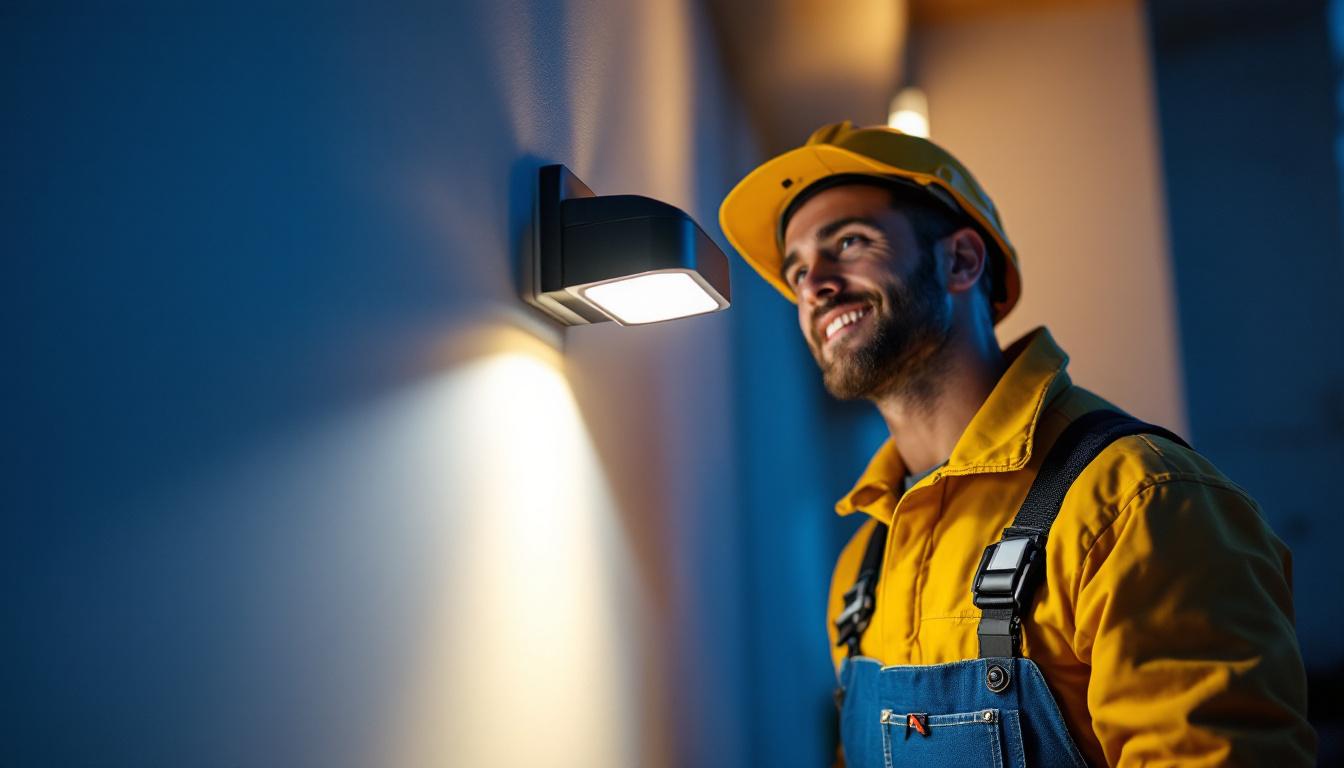
As the demand for energy-efficient lighting solutions continues to grow, the role of electrical ballasts in lighting systems becomes increasingly critical. For lighting contractors, understanding the intricacies of electrical ballast replacement is essential for ensuring optimal performance and longevity of lighting installations. This article provides comprehensive advice tailored specifically for lighting contractors, covering everything from types of ballasts to installation tips and troubleshooting common issues.
Electrical ballasts are devices that regulate the current to fluorescent and HID (high-intensity discharge) lamps. They serve two primary functions: providing the necessary starting voltage to initiate the lamp and controlling the current during operation. Without a properly functioning ballast, lighting systems can experience flickering, reduced efficiency, and even complete failure. The importance of ballasts extends beyond mere functionality; they play a critical role in the overall energy efficiency of lighting systems, impacting both operational costs and environmental sustainability.
There are several types of ballasts available on the market, each designed for specific applications. The most common types include magnetic ballasts, electronic ballasts, and smart ballasts. Understanding the differences between these types is crucial for contractors when selecting replacements. Each type has its own set of advantages and disadvantages, making it essential to consider the specific needs of the lighting environment.
Magnetic ballasts are the traditional option, using electromagnetic coils to regulate current. They are known for their durability but can be less energy-efficient compared to their electronic counterparts. These ballasts are often favored in older installations and are appreciated for their reliability over time. Electronic ballasts, on the other hand, use solid-state technology to provide more efficient operation, resulting in reduced energy consumption and improved light quality. They are lighter and more compact, allowing for easier installation in various settings. Smart ballasts incorporate advanced features such as dimming capabilities and integration with building management systems, offering enhanced control over lighting environments. This adaptability not only improves user experience but also helps in achieving energy savings through optimized lighting levels based on occupancy and daylight availability.
Before proceeding with a ballast replacement, it is essential to accurately diagnose the problem. Common symptoms of a failing ballast include flickering lights, buzzing noises, and lamps that won’t start. Additionally, contractors should inspect for physical signs of damage, such as burnt or discolored components. Proper identification of the issue not only saves time but also ensures that the correct replacement is selected. Regular maintenance checks can help identify potential issues before they lead to complete failure, thereby extending the lifespan of the lighting system.
In some cases, the symptoms of a failing ballast may be mistaken for issues related to the lamps themselves. Therefore, it is advisable to test the lamps in a known working fixture to rule out lamp failure as the cause of the problem. Furthermore, understanding the age and type of the existing ballast can provide insights into its expected lifespan and performance characteristics. For instance, older magnetic ballasts may have a shorter lifespan compared to newer electronic models, which are designed for longevity and efficiency. By staying informed about the latest advancements in ballast technology, contractors can make more informed decisions that enhance the reliability and efficiency of their lighting systems.
Selecting the appropriate replacement ballast is critical for maintaining the performance and efficiency of the lighting system. Several factors must be considered during this process.
One of the most important considerations is compatibility with existing fixtures. Contractors should verify the lamp type, wattage, and voltage of the current system to ensure the new ballast matches these specifications. Using an incompatible ballast can lead to poor performance or even damage to the lighting system.
Additionally, it’s advisable to check the physical dimensions of the ballast to ensure it fits within the fixture. Some fixtures may have limited space, requiring a more compact ballast design. This is particularly important in retrofitting scenarios where space constraints can significantly impact the overall installation. Understanding the layout and configuration of the existing lighting setup can help in selecting a ballast that not only fits but also integrates seamlessly with the current system.
Energy efficiency is a crucial factor in today’s lighting market. When selecting a replacement ballast, contractors should look for models with high efficiency ratings. Electronic ballasts generally offer better energy efficiency compared to magnetic options, which can lead to significant cost savings over time.
Furthermore, many energy-efficient ballasts are designed to work with energy-saving lamps, providing additional benefits in terms of energy consumption and environmental impact. Choosing a high-efficiency ballast can also enhance the overall sustainability of a lighting project. It’s worth noting that some ballasts come equipped with features such as dimming capabilities and programmable settings, allowing for even greater control over energy use and light output. These advanced functionalities not only contribute to energy savings but also improve the adaptability of the lighting system to various environments and tasks, making them an excellent choice for both commercial and residential applications.
Once the appropriate replacement ballast has been selected, proper installation is key to ensuring optimal performance. Following best practices during installation can prevent future issues and enhance the reliability of the lighting system.
Before beginning any installation work, safety should always be the top priority. Contractors must ensure that power is turned off at the circuit breaker to prevent electrical shock. Wearing appropriate personal protective equipment (PPE), such as gloves and safety glasses, is also recommended.
Additionally, it’s wise to use insulated tools and follow all local electrical codes and regulations during the installation process. This not only protects the contractor but also ensures compliance with safety standards. It’s also beneficial to have a first aid kit on hand and to be familiar with emergency procedures in case of an accident. Keeping the work area tidy and free from clutter can further reduce the risk of slips, trips, and falls, which are common hazards on job sites.
1. **Remove the Old Ballast**: Start by carefully removing the existing ballast from the fixture. Take note of how the wires are connected, as this will aid in the installation of the new ballast.
2. **Connect the New Ballast**: Follow the manufacturer’s wiring diagram to connect the new ballast. Ensure that all connections are secure and properly insulated to prevent short circuits. It is also advisable to double-check the compatibility of the new ballast with the existing fixtures and lamps to ensure optimal performance and efficiency.
3. **Test the Installation**: After installation, restore power to the circuit and test the lighting system. Verify that the lamps operate correctly without flickering or buzzing. If any issues arise, troubleshoot by checking all connections and ensuring that the ballast is functioning as intended. It may also be helpful to document any problems encountered during installation for future reference, as this can aid in diagnosing similar issues in other projects.
4. **Final Inspection**: Once the system is operational, conduct a thorough inspection of the installation. Look for any signs of overheating, unusual sounds, or flickering lights, which could indicate underlying problems. This step is crucial, as it ensures that the installation meets both performance expectations and safety standards. Additionally, consider providing the client with information on how to maintain their lighting system, including tips on regular checks and when to call for professional assistance.
Even with careful installation, issues can occasionally arise. Understanding how to troubleshoot common ballast problems can save contractors time and enhance customer satisfaction.
Flickering lights can be a sign of several issues, including a faulty ballast or poor connections. If flickering occurs, first check the connections to ensure they are secure. If connections are tight and the problem persists, it may be necessary to replace the ballast.
In some cases, flickering may also be caused by the lamps themselves. Contractors should inspect the lamps for signs of wear or damage and replace them if necessary.
Buzzing noises coming from the ballast can indicate a problem with the unit itself. This is often a sign of an aging or failing ballast. If the noise is persistent, it may be best to replace the ballast to prevent further issues.
In some instances, buzzing can also result from poor lamp compatibility. Ensuring that the ballast is compatible with the installed lamps can help mitigate this issue.
Regular maintenance is essential for ensuring the longevity and performance of ballasts in lighting systems. Implementing a maintenance schedule can help identify potential issues before they escalate.
Contractors should conduct regular inspections of lighting systems to check for signs of wear or damage. This includes examining ballasts, lamps, and wiring for any abnormalities. Early detection of issues can prevent costly repairs and minimize downtime for clients.
During inspections, it’s also beneficial to clean fixtures and remove dust or debris that may accumulate over time. A clean fixture not only enhances the appearance of the lighting but also improves efficiency.
As technology continues to evolve, upgrading to advanced ballast technologies can provide numerous benefits. Smart ballasts, for instance, offer features such as dimming capabilities and integration with building automation systems, allowing for greater control over lighting environments.
Investing in advanced ballast technologies can enhance energy efficiency, reduce operational costs, and improve overall lighting quality. Contractors should stay informed about the latest advancements in ballast technology to provide clients with the best options available.
Electrical ballast replacement is a critical aspect of maintaining effective lighting systems. By understanding the types of ballasts, selecting the right replacements, and following best practices for installation and maintenance, lighting contractors can ensure optimal performance and satisfaction for their clients. As the industry continues to evolve, staying informed about advancements in ballast technology will further enhance the value provided to customers.
Ultimately, a commitment to quality and efficiency in ballast replacement will not only benefit contractors in their work but also contribute to a more sustainable future in lighting solutions.
Ready to elevate your lighting projects with the highest quality ballasts and lighting solutions? Look no further than LumenWholesale. Our spec-grade products ensure you deliver optimal performance and client satisfaction, all at unbeatable wholesale prices. Say goodbye to local distributor markups and hello to a vast selection of reliable lighting essentials that meet rigorous industry standards. Plus, with the convenience of free shipping on bulk orders, you can stock up on superior lighting without any hidden fees. Don’t compromise on quality or value—Wholesale Lighting at the Best Value is just a click away. Choose LumenWholesale for quality, affordability, and convenience in all your lighting endeavors.

Discover the essential guide to electric wire connectors with insights from top lighting contractors.

Explore the transformative role of beautiful light bulbs in the lighting industry, where aesthetics meet innovation.

Discover how motion detected light systems boost lighting contractors’ profits by reducing energy costs, enhancing safety, and increasing client satisfaction.

Explore the transformative role of modern lighting solutions in greenhouses, enhancing plant growth and sustainability.